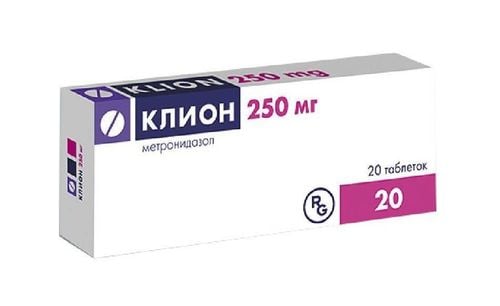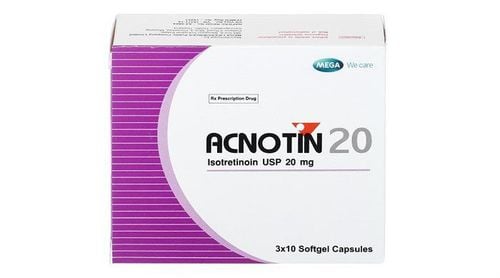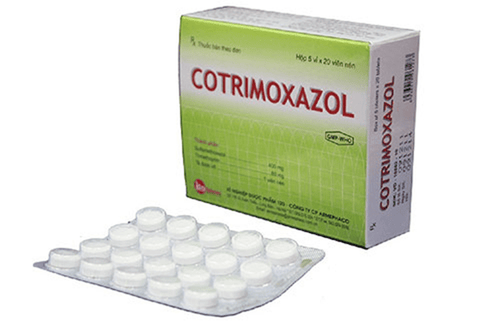Vibramycin is an antibiotic belonging to the tetracycline group, used to treat bacterial infections. Detailed information about Vibramycin is provided in the following article.
1. What Is Vibramycin?
The active ingredient in Vibramycin, Doxycycline, is an antibiotic from the tetracycline group. The medication is available in the following forms:
- Capsules with dosages of 50 mg and 100 mg for oral administration.
- Injectable powder with dosages of 100 mg and 200 mg for intravenous injection or infusion.
Mechanism of Action: Doxycycline kills bacteria by binding to the 30S subunit of the ribosome, inhibiting bacterial protein synthesis. It has bacteriostatic activity against a wide range of Gram-negative and Gram-positive bacteria.
2. What Are the Uses of Vibramycin?
Vibramycin is used to treat or prevent bacterial infections, including:
- Treatment of: Acne, cystic acne, intestinal infections, urinary tract infections, eye infections, gonorrhea, chlamydia, and periodontitis.
- Treatment of: Swelling or acne-like lesions caused by rosacea, anthrax, and infections caused by ticks or lice.
- Prevention of: Malaria.
3. Dosage of Vibramycin
The dosage of Vibramycin depends on the nature and severity of the infection.
Adults:
- General oral dosage: 200 mg/day on the first day (divided into two doses), then 100 mg once daily. For severe infections: maintain 200 mg/day.
- Uncomplicated gonorrhea: 100 mg twice daily for 7 days or a single dose of 300 mg followed by another 300 mg after 1 hour.
- Syphilis: 100–200 mg twice daily for at least 14 days. For syphilis lasting over a year: 100 mg twice daily for 28 days.
- Prevention of leptospirosis: 200 mg once weekly during exposure for up to 21 days and 200 mg upon leaving the risk area.
- Malaria prevention: 100 mg once daily, starting 1–2 days before entering the malaria-endemic area, continuing daily during the stay, and for 4 weeks after leaving.
- Treatment of chloroquine-resistant falciparum malaria: 3 mg/kg once daily for 7 days, combined with quinine.
- Brucellosis: 100 mg twice daily for 6 weeks, combined with rifampin or streptomycin.
- Periodontitis: 20 mg twice daily.
- Anthrax prevention for penicillin- or ciprofloxacin-sensitive individuals: 100 mg twice daily for 60 days, combined with 1–2 other antibiotics.
- Non-gonococcal urethritis: 100 mg twice daily for 7 days.
- Treatment of pelvic inflammatory disease, endometritis, or peritonitis: Intravenous 100 mg twice daily, combined with cefoxitin (2 g every 6 hours) for 4 days and for 48 hours after improvement. Followed by oral 100 mg twice daily for 10–14 days.
- Uncomplicated Chlamydia infections: 100 mg twice daily for at least 7 days.
- Treatment of Lyme Disease (caused by Borrelia burgdorferi), Tularemia (caused by Pasteurella tularensis), and Q Fever (caused by Coxiella burnetii): Take 100 mg twice daily for 14–21 days.
- Rickettsia infections: 100 mg twice daily for 7–14 days.
- Treatment of Rosacea (Red Nose): Take 40 mg once daily.
- Intravenous Dosage: Day 1: 200 mg, divided into 1–2 doses. Following days: 100–200 mg daily.
Children:
- General dosage: For children over 8 years old and weighing under 45 kg: On the first day, take 4–5 mg/kg/day divided into two doses. Subsequently, take 2–2.5 mg/kg once daily (maximum 200 mg/day). For severe infections, take 2–2.5 mg/kg twice daily. For children over 8 years old and weighing over 45 kg: Use the same dosage as adults.
- Malaria prevention for children over 8 years old: Take 2 mg/kg/day (maximum 100 mg/day), starting 1–2 days before entering the affected area, continuing daily during the stay, and for 4 weeks after leaving the area.
- Anthrax prevention: For children under 8 years old and those over 8 years old weighing under 45 kg: Take 2.2 mg/kg twice daily for 60 days. For children over 8 years old and weighing more than 45 kg: Use the same dosage as adults.
- Intravenous dosage: For children weighing under 45 kg: Administer 4.4 mg/kg on the first day, then reduce the dosage on subsequent days.
Other Cases:
- Renal impairment: No dosage adjustment is required, as doxycycline is eliminated not only through the kidneys but also via the liver, bile, and gastrointestinal tract.
4. How to Use Vibramycin
Oral form: Take Vibramycin with a full glass of water. It is best taken on an empty stomach, at least 1 hour before or 2 hours after meals. Swallow the tablet whole; do not crush, chew, or open it.
Injectable powder form: Administered via intravenous injection or infusion. Do not use intramuscular injections as it causes local irritation and poor absorption.
5. Contraindications of Vibramycin
Do not use Vibramycin if allergic to doxycycline or other tetracycline antibiotics.
6. Side Effects of Vibramycin
Digestive system side effects (caused by both oral and injectable forms):
- Loss of appetite, nausea, vomiting.
- Abdominal pain, diarrhea.
- Glossitis, difficulty swallowing, enteritis, inflammation of the genital-anal region, pancreatitis.
- Hepatotoxicity.
- Tooth discoloration in adults, which may be reversible after stopping the drug.
Permanent tooth discoloration and enamel hypoplasia may occur when Vibramycin is used during tooth development.
Skin Side Effects:
- Rash, redness.
- Peeling skin, increased sensitivity to sunlight.
- Renal Toxicity: Increased blood urea nitrogen (BUN) levels.
Immune System Side Effects:
- Urticaria, angioedema, anaphylaxis, purpura.
- Pericarditis, exacerbation of systemic lupus erythematosus.
- Allergic reactions (rash, difficulty breathing, swelling of the face and throat).
Other Side Effects:
- Bulging of fontanelles in infants, increased intracranial pressure in adults.
- Chest pain, irregular heartbeat, difficulty breathing, reduced or no urination.
- Fever, chills, body aches, swollen lymph nodes, weakness, pale skin, easy bruising, bleeding.
Hematologic Side Effects:
- Hemolytic anemia, thrombocytopenia.
- Eosinophilia, neutropenia.
7. Precautions When Using Vibramycin:
- Use Vibramycin for the prescribed duration, even if symptoms improve. Missing doses may increase the risk of antibiotic resistance.
- Vibramycin does not treat viral infections like the flu or common cold.
- Vibramycin may cause permanent tooth discoloration in children under 8 years old. It should only be used in severe or life-threatening conditions, such as anthrax or Rocky Mountain spotted fever.
- Taking Vibramycin during pregnancy may affect fetal tooth and bone development. Using it in the second half of pregnancy can lead to permanent tooth discoloration in the baby.
Doxycycline can pass into breast milk and affect bone and tooth development in nursing infants. Avoid breastfeeding while taking this medication. - Inform your doctor if you have a history of liver disease, kidney disease, asthma, sulfite allergy, increased intracranial pressure, or esophageal problems.
- Vibramycin increases sensitivity to sunlight. Wear protective clothing and use sunscreen when outdoors.
- Prolonged or repeated use of Vibramycin may cause oral thrush or a new vaginal yeast infection.
8. Drug Interactions with Vibramycin
Medications that may interact with Vibramycin include: oral retinoids (e.g., acitretin, isotretinoin), barbiturates (e.g., phenobarbital), blood thinners (e.g., warfarin), digoxin, antiepileptic drugs (e.g., phenytoin), and strontium-containing medications
Vibramycin reduces prothrombin activity in plasma; therefore, patients taking anticoagulant medications should adjust their anticoagulant dosage accordingly.
Do not use Vibramycin simultaneously with any other antibiotics.
Barbiturates, carbamazepine, and phenytoin reduce the half-life of the medication.
The concurrent use of tetracyclines and methoxyflurane can lead to fatal kidney toxicity.
Vibramycin may reduce the effectiveness of oral contraceptives.
Doxycycline may reduce the effectiveness of live bacterial vaccines (e.g., typhoid vaccine).
Do not take iron supplements, multivitamins, calcium, antacids, or laxatives within 2 hours before or after taking Vibramycin, as they bind to doxycycline and prevent its absorption.
Vibramycin is an antibiotic used to treat bacterial infections. However, it should be used as prescribed by your doctor to ensure safety, effectiveness, and to prevent antibiotic resistance. Contact your doctor if you have any questions about Vibramycin.
To arrange an appointment, please call HOTLINE or make your reservation directly HERE. You may also download the MyVinmec app to schedule appointments faster and manage your reservations more conveniently.








